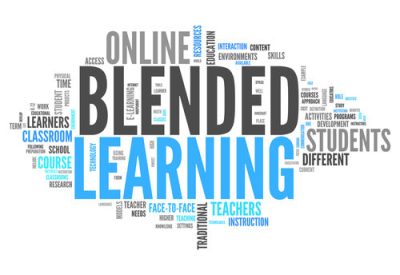
What isn’t blended learning?
Blended learning is not a completely online course or a lecture course that is broadcast online. It doesn’t mean just switching analogue tools for digital ones. In blended learning the online and in-person elements work together to help foster a more effective and diverse learning experience.
Why blended learning?
Blended learning offers opportunities to diversify teaching and widen student access by reducing the need to travel. It also offers a chance to increase the flexibility and adaptability of educational institutions while enhancing learners’ digital skills and independence.
Students have always been encouraged to learn outside of the classroom but the recent upsurge in digital technology has meant that teaching can now be far more engaging and can have a far reaching effect on the overall learning experience.
In a modern world where technology plays such a significant part in our lives it’s clear that schools and universities must keep evolving to help students succeed in the modern world of work – blended learning is very much here to stay.
Blended learning benefits for teachers
- Teachers can save time on lesson preparation and tweak easily for different classes
- Insight into classroom pace and learning success through reports and lesson analytics
- Increased student engagement due to lesson variation
- Decreased pressure on the teacher to present
- Marking and grading work is more automated in many cases, saving the teacher’s time
- More environmentally friendly due to less printing
Blended learning benefits for students
- Increased student engagement which holds their focus for longer
- Increased autonomy, students take charge of their own learning
- Allows the student to learn at their own pace
- Students can customise lessons in the same room as other students based on their needs
- Prepares students for the future giving them translatable life skills
- Increases computer literacy
Video in blended learning
For many educators video is one of the key tools they need to deliver blended learning. Being able to deliver asynchronous lectures using video enables students to learn in a self-paced and more focused environment. Students can easily navigate the content of the video using content and video captioning tools, they can also reflect on their learning and prepare for synchronous sessions, helping with participation and engagement as well as maximising the use of synchronous teaching time.
Next steps
Finding the right technology is crucial in engaging students in blended learning but sometimes the choice can be overwhelming. Enlisting the help of an experienced IT partner can be a wise move to advise on which tools might suit you best. They will also make sure your technology is implemented correctly and will give you support with any issues that might arise along the way.
The pandemic has resulted in a real surge in the adoption of blended learning in the education sector, now it’s time to use the technology available to its full potential to help create a more diverse educational offering and an enhanced student experience.
If you have any questions regarding the use of IT in education, please contact your Account Manager directly or get in touch with us here and we’ll be happy to help you.
< Back